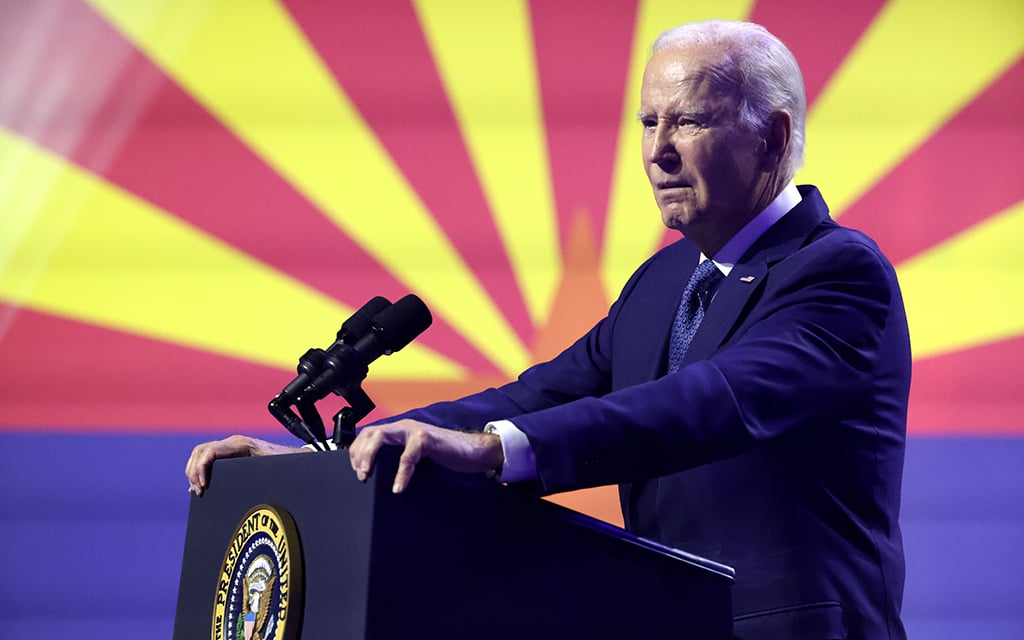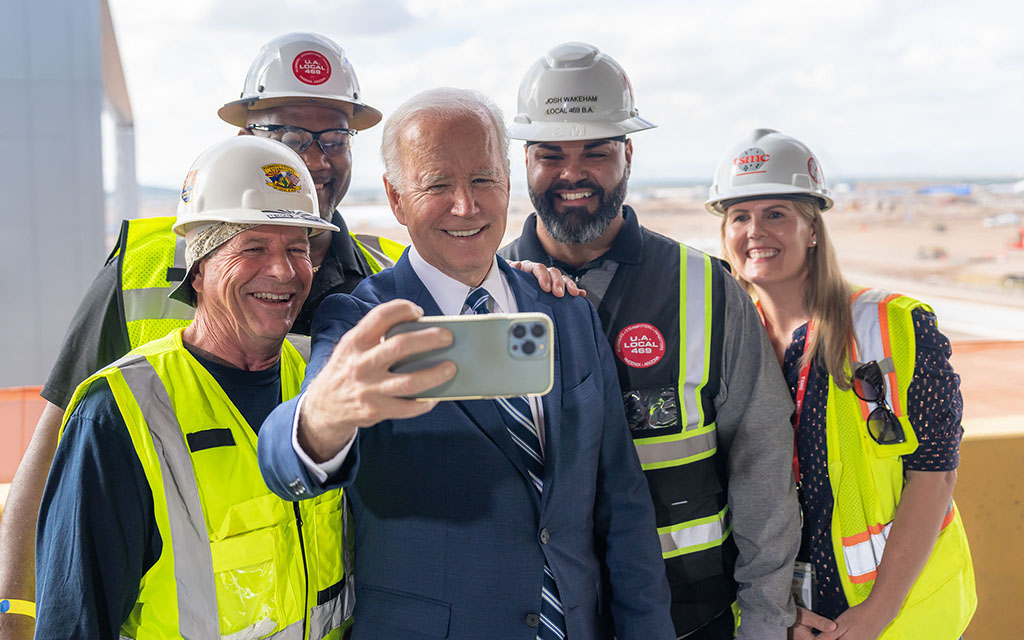Jobs
Arizona hits record low unemployment, Biden awaits political windfall

Although Arizona’s unemployment numbers are at a record low, concerns about the economy have contributed to President Joe Biden still trailing Donald Trump in state polls. (File photo by Kevinjonah Paguio/Cronkite News)
WASHINGTON – Arizona’s unemployment rate fell in May to its lowest rate ever recorded, reaching a seasonally adjusted 3.4% and falling below the previous record of 3.5% recorded in August 2007, according to state data released Thursday.
The job boom has yet to translate into popularity for President Joe Biden, despite steps he’s taken to boost growth in manufacturing – a sector that’s seen some of the biggest gains. Polls show him trailing former President Donald Trump in Arizona.
Arizonans are sour on the economy, and pessimistic about their prospects if Biden wins reelection.
A CBS News/YouGov poll of likely Arizona voters last month found that only 17% expect to be better off financially in a second Biden term, compared to 45% if Donald Trump returns to the White House.
Thomas Volgy, professor of political science at the University of Arizona and a former mayor of Tucson, said there’s typically a lag between an improving economy and public perceptions.
He expects the economy to weigh heavily on voters in November, “but it is going to be competing very aggressively with other issues” such as abortion and other cultural topics.
Israel Torres, a Tempe-based political consultant who specializes in labor law, expects voters to eventually give Biden more credit for such “robust job growth,” along with childcare requirements for some federal contractors and stronger worker safety protections.
Together, these policies should be “helpful in moving the needle,” he said. “At the end of the day, when you look at what the president’s administration has done for union workers, I think union workers will actually, at the ballot box, remember that.”
The new data from the state shows gains from the previous month in the health care and social assistance sector and the manufacturing sector.
Overall the state lost about 10,000 jobs in the past month, not seasonally adjusted. The state Office of Economic Opportunity described that as typical because of seasonal job losses in state and local education heading into the summer.
Compared to May 2023, the state had 63,900 more nonfarm jobs.
Unemployment dropped 0.2 percentage points to 3.6% from March to April when seasonally adjusted, according to federal Bureau of Labor Statistics data.
Arizona’s joblessness rate has been better than average. The national rate stood at 4% as of June 7, up from 3.7% a year earlier.
The state’s labor force also has grown faster than the national average for several years – that is, more workers and more jobs – even as the jobless rate has dipped.
The state has benefited from billions of dollars in investment from the semiconductor industry, and from Washington.
The CHIPS and Science Act signed by Biden in 2022 set aside $52 billion to jumpstart domestic semiconductor manufacturing. Much of that is coming to the Phoenix area.
Taiwan Semiconductor Manufacturing Company has committed $65 billion for advanced chip fabrication plants in north Phoenix, the biggest foreign investment in state history.
In April, the Commerce Department announced $6.6 billion for the TSMC projects.
But the 20,000 jobs eventually expected haven’t yet materialized. The plants faced setbacks related to finding specialized manufacturing workers and COVID-19 surges.
Arizona lost manufacturing jobs from March to April, but added 1,600 jobs in the sector from April to May.
Since Biden took office in January 2021, manufacturing jobs are up about 8% in Arizona – from about 179,000 to 194,000 as of last month, according to the Arizona Office of Economic Opportunity.’
Dennis Hoffman, director of the Seidman Research Institute and economics professor at Arizona State University, expects a jump in jobs over the next one to five years as TSMC and Intel open chip fabrication plants in the Phoenix area.
“Where we’re getting a lot of jobs right now is in the construction of (those) facilities,” and from road construction around the Valley related to these projects, he said.
Arizona has received $4.7 billion for roads, bridges and public transportation under the Bipartisan Infrastructure Law, according to a White House fact sheet. Biden signed that law in 2021.
Construction jobs dipped from April to May but the sector is still ahead by about 3,900 jobs from a year earlier.
As Biden’s poll numbers reflect, job growth isn’t the only factor in consumer or voter sentiment.
A tight housing market make some feel the economy isn’t on solid ground, along with inflation that spiked 1.9% in the Phoenix region in the last two months, according to BLS data.
Paul Padilla, director of market intelligence at the Arizona Hispanic Chamber of Commerce, noted that higher grocery prices mean families spend more of their disposable income on food.
Homeowners are also getting squeezed. In 2020, the median home price in the Phoenix-Mesa-Scottsdale metro area was about four times median household income. The ratio was about 6 to 1 two years later, according to the Joint Center for Housing Studies of Harvard University.
Some states have seen dips in unemployment related to people dropping out of the workforce.
That has not been the case in Arizona, according to Doug Walls, the labor market information director for the state economic office. The state saw an additional 2,000 people in the labor force from April to May.








:max_bytes(150000):strip_icc()/roundup-writereditor-loved-deals-tout-f5de51f85de145b2b1eb99cdb7b6cb84.jpg)


